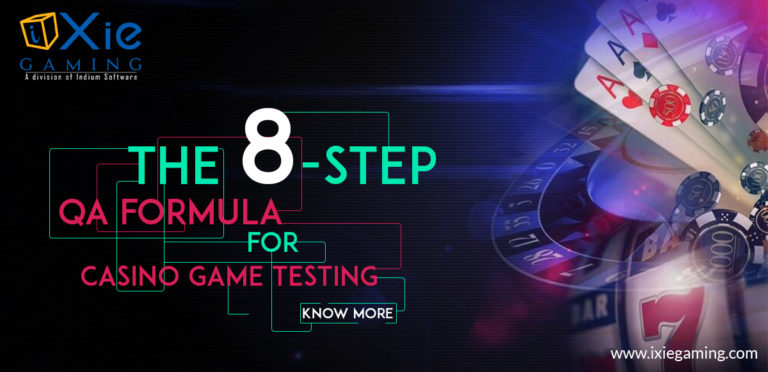In recent years, big players in the gaming sector like Microsoft, have recognized the significance of data analytics. As a result, they have begun purchasing firms that give access to player data.
Also, smaller developers are trying to stay up with the data science and marketing aspect which is prevalent in major corporations.
According to a Statista report, the video gaming industry has amassed up to 2.7 billion users worldwide. As a result of this growing audience, developers and game companies are challenged to offer a seamless user experience and that’s where gaming metrics come in.
What are Gaming Metrics?
Think of gaming metrics as the raw data that a database houses and transforms into numbers which help game developers assess how their games perform about user experience, satisfaction, and purchase patterns.
Assessing game metrics aids developers ascertain player satisfaction and challenges as well. These details not only enable developers to improve their game’s content but also affect the monetary value they place on their products.
Competition intensifies as gaming companies continue to flourish. Also, developers are expected to keep up with the trends by relying on partners who are conversant with the player experience and how to enhance it.
Therefore, with the help of well-grounded partners, developers are sure to inspire customer loyalty.
Why are Game Metrics Necessary?
Game metrics are crucial since they give developers concrete advice on how to enhance their games.
The information that developers get from game metrics gives them insight into the revenue generation of their products and also user satisfaction.
Sometimes you may notice some poor performance aspects of your game. A way to remedy this challenge would be to create an offline version of the game or preload the data to optimize its availability for customers.
Also, you may improve your product’s retention rate by using these performance measures. For instance, you can learn the following:
- How your game works on different carrier networks.
- How the differences in operating systems affect loading times.
- How performance varies by location.

Important Game Analytics for Marketers and Developers
It is said that data is undoubtedly the king in this fiercely competitive market.
The user data that game companies gather is instrumental in making them understand how to satisfy their customers and earn their loyalty in return.
While there are some very simple techniques to monitor a game’s performance, it can be challenging to translate those findings into strategies. This is because complications may arise from the acquisition of relevant data metrics.
Therefore, the following are metrics that developers and marketers will find helpful through the course of their journey.
- Daily Active Users (DAU)
This metric is key as it plays a vital role in making games get popular. It helps you know the number of users who spend at least a session on your game per day.
For instance, unlike a banking app where high monthly usage can be the aim, mobile games often require high daily usage to be successful.
This is why it’s typically a top priority for mobile game developers to increase DAU as much as feasible.
- Monthly Active Users (MAU)
It is the number of players who launched your game at least once in a given month. For instance, you can leverage the Smartlook tool which requires no registration or credit card to generate your Daily and Monthly active users.
Follow these procedures once you’re on the Smartlook dashboard
- Select ‘Add New Title’
- Navigate to ‘Active Users’ and there you’ll find where you can select either active, monthly, or daily users about their data range.
- Finally, tap on ‘Save’ to add the new tile to the dashboard to enable you easily monitor your active users whenever you use smart look.
It might be interesting to know How to Make Your Games More Popular: Game Analytics for Beginners
- Average Revenue Per Daily Active User (ARPDAU)
This metric plays a key role in the monetization aspect of your products.
For instance, if your game generates $4000/day and your DAU is 200, the value of the ARPDAU will be $20.
After significant marketing campaigns, price modifications, feature releases, or other game improvements, it’s critical to monitor ARPDAU.
Additionally, since Smartlook’s solution currently records DAU by default, calculating ARPDAU is simply provided you know your daily income.
- Retention Rate
Depending on your objectives for user involvement, there are several techniques and algorithms for measuring retention.
Again, maintaining high daily use is often the aim of mobile games, so it’s critical to monitor how many players return to your game after the day’s session.
For instance, you can use the Smartlook tool to create a retention table using these procedures.
- First, choose the event whose retention you want to calculate.
- Create a custom event, choose a date range, and specify whether smart look should display it based on day, week, or month.
- Finally, navigate to the ‘Retention Table’ area and select ‘generate’.
- Ratio of Daily to Active Monthly Users
The percentage of daily users to monthly users is sometimes called the ‘stickiness rate’. It indicates how often your customers log into the app.
Therefore, stickiness rate = DAU * 100
MAU
For instance, if your game records 150 000 MAU at an average of 25000 DAU, the ratio of DAU to MAU will be 6%.
This implies that in a month of 30 days, an average player logs into your game for a duration of 6℅ of the 30 days which means 1.8 days out of 30 days.
- In-game Purchases
It’s critical to build events for monitoring each in-app payment if your business strategy depends on them.
Even if players can only transact with your virtual currency, it’s still crucial to keep track of them so you can verify that your game’s rules are being followed.
Once more, you may define custom events in Smartlook to keep track of every completed transaction, regardless of whether it used actual money or fictitious money.
Furthermore, since the platform also enables you to create and examine funnels, you can follow users’ actions leading up to a transaction and see where the majority of them quit.
For instance, Vertigo Games, the developer of several first-person shooting games, uses funnels as their most famous Smartlook feature.
Based on actions like in-game offers, purchases, and upgrades, they have created many 30- and 60-step funnels.
These funnels are used by their QA and product teams to validate the functioning and user experience of their games.
Conclusion
The video game business is rapidly expanding, thereby pressurizing gaming companies to succeed. The atmosphere is intense, with diverse ways in which participants can use their limited leisure time.
Therefore, for gaming companies to overcome these hurdles to success, the teams must look beyond what’s obtainable at present.
And to contribute significantly to growth metrics that establish brand equity, the teams must work smarter, and not harder.
Bear in mind that the choices you make now about your game analytics approach will lay the groundwork for the long-term success of your company.






